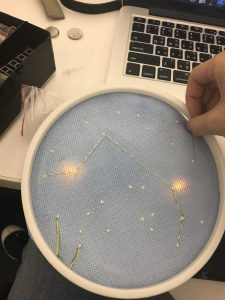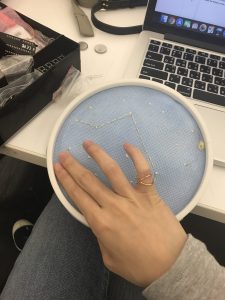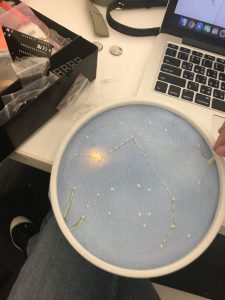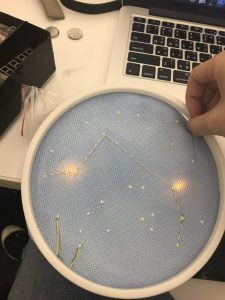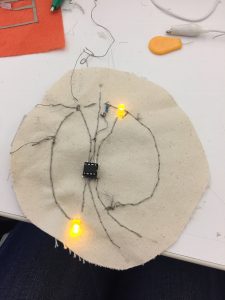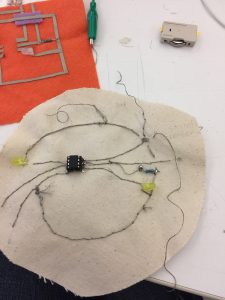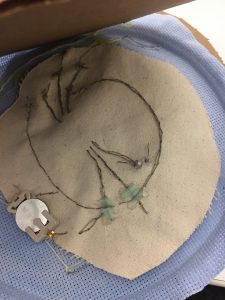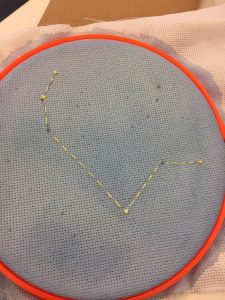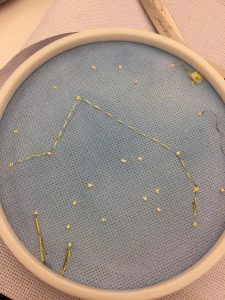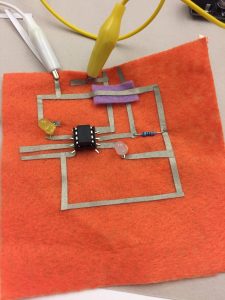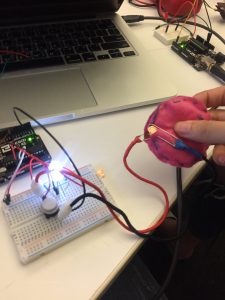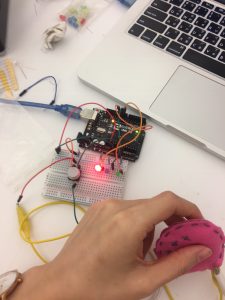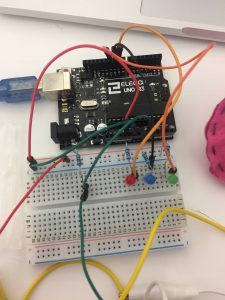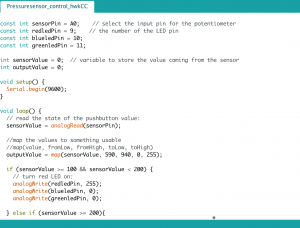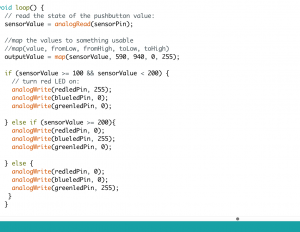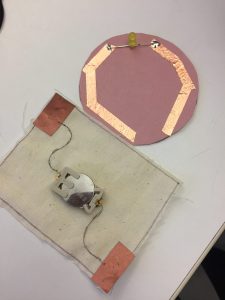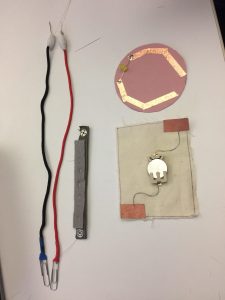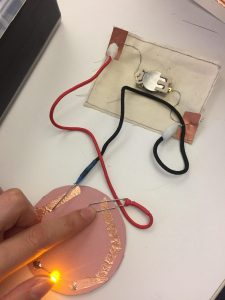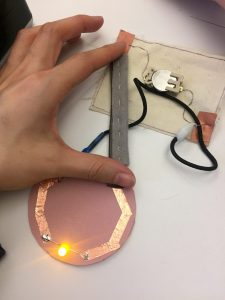
New Craft – Embroidery
I started my homework with learning a new craft which was embroidery. I actually always wanted to embroider but never got my hands into starting one. This homework is my perfect reason to start.
I would consider myself a storyteller, maker, designer, and a craftsperson. I love anything that is hand-made which I feel really gives another aspect of warmth to it. That is why I would say I’m a craftsperson. I love anything physical that you can hold. I also love to tell a good story and hear a good story. I realized that storytelling’s importance from last semester’s motion graphic class in engaging other people to understand your situation or your perspective. I’m also a designer because I love to solve problems or even just noticing an issue and trying to design for or with a specific goal/outcome in mind.
I love hand lettering and embroidery. These two are something that really makes me relieved and relaxed. Although I am not an expert in both of these tools, I love using them to make things. The repetitiveness of these two tools somehow soothes my mind and makes me really clear-headed and satisfied.
Learning embroidery was really fun. I think the most frustrating part for me was that it takes so long and requires precision for it to look nice but hard work always pays off and the end product makes you really happy and satisfied. Therefore, I would suggest beginners give their full attention to it for the first time. I think learning it was not as intimidating as it looked and there are a lot of great instruction videos on YouTube and I would suggest beginners to start searching there.
Swatch – Poki Dots

The inspiration for my swatches was my love for polka dots. I decided to make polka dot push sensors. When you push on my poki dot swatch, you can turn on a LED. The materials I used were felt, yarn, conductive tape, and sponge. I was going to use conductive fabric did not find enough fabric and resorted to tape in the end.
The swatch was made by me cutting same sized circles and sewing them together. Inside I would tape the conductive tape inside with two stripes of conductive tape making a T shaped track and put a sponge in the middle to make the push button. I put the 3-vott battery to try if the circuit is ok and it worked fine.
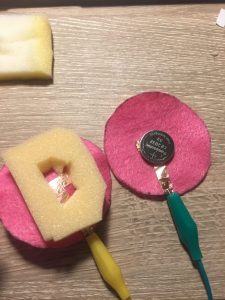
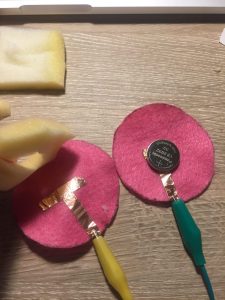
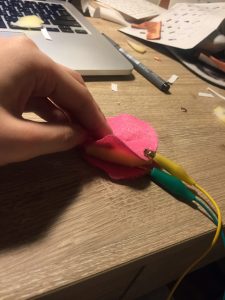
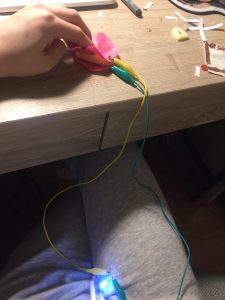
Continue reading →
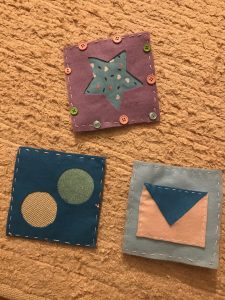
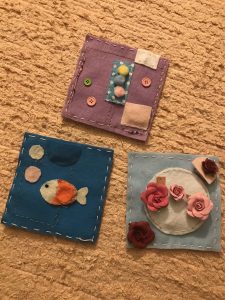
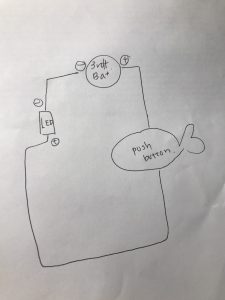
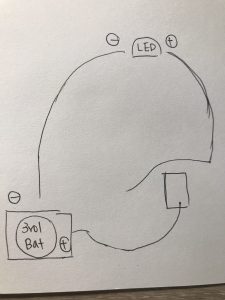
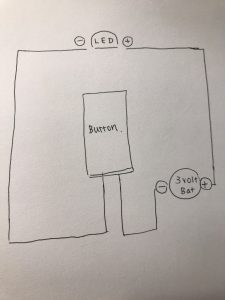
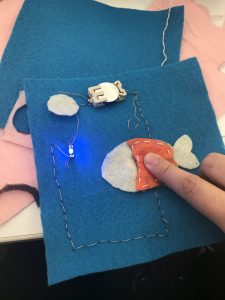
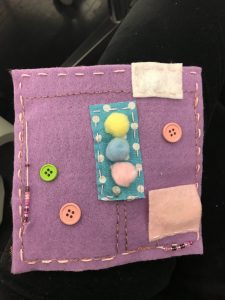
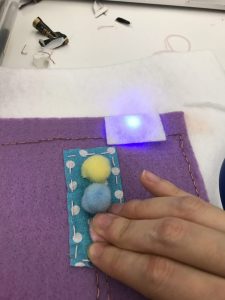

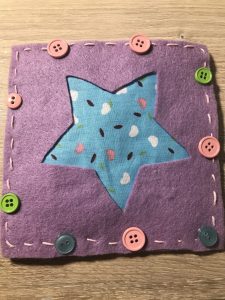
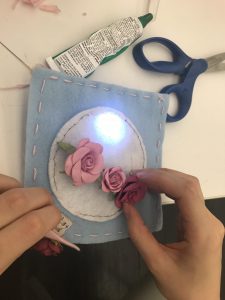
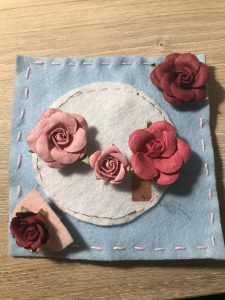
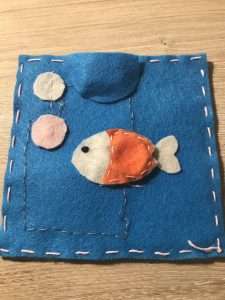
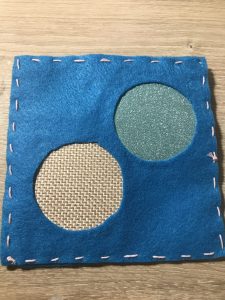
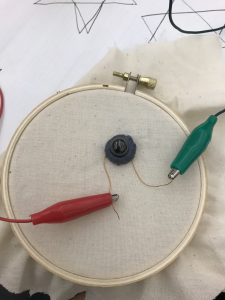
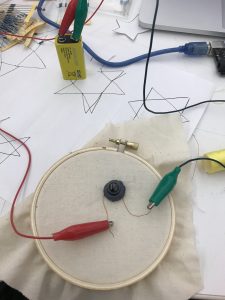
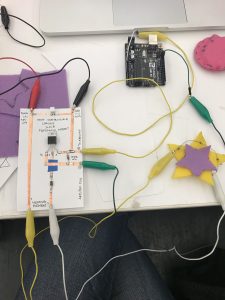
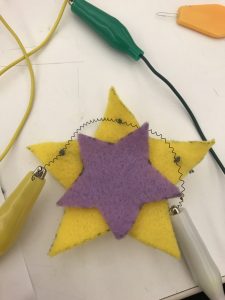
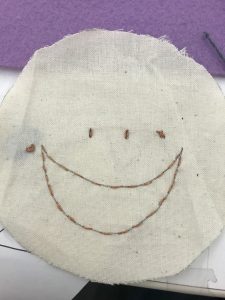
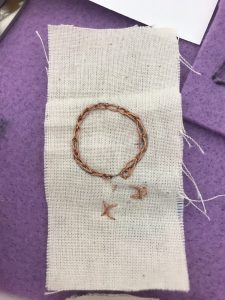
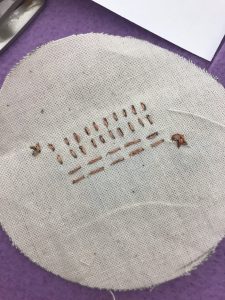
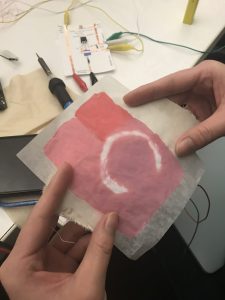
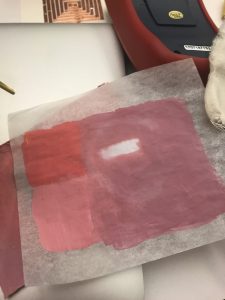
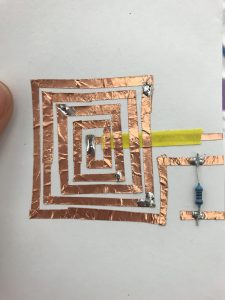
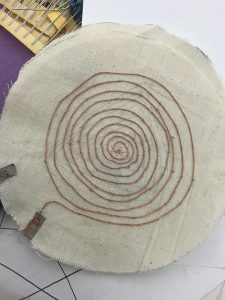
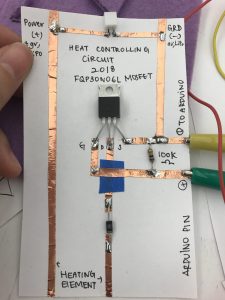 .
.